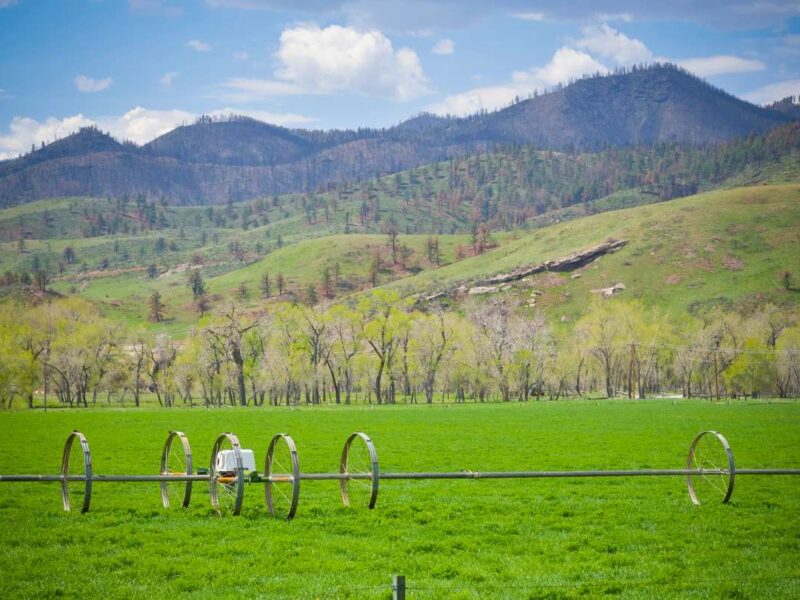
Introduction to Conservation Finance
Conservation Finance Series—Part One
Landowners can be paid for improving soil health, water quality and wildlife diversity while maintaining agricultural and ranching operations on their land.
This is the exact premise of conservation finance. A variety of approaches, including conservation easements, wetland mitigation banking, grassland carbon sequestration and watershed investment funds, pay landowners for the ecological services they provide. Conservation finance can help landowners increase and diversify their cash flows, amid societal pressures to produce agricultural goods in greater quantities and of higher quality.
WRA, Inc., in partnership with the Western Landowners Alliance, is providing this conservation finance blog series over the course of the year to help WLA members understand various conservation finance approaches and evaluate different opportunities for their own property. This initial article provides an introduction to conservation finance and an overview of the individual topics that will be explored in the series.
Conservation finance is underpinned by a few key concepts.
First, conservation finance approaches are “outcome-based.” In other words, landowners may be paid for the clean water (i.e. outcome) they delivered to a city, similar to how they are paid for the crop they deliver to a buyer. These environmental outcomes may be measured against pre-defined metrics, which may entail using an established assessment tool. Practices employed to achieve the environmental outcomes may be prescribed or may be up to the discretion of the landowner, depending on the program. The “outcome-based” requirement sets conservation finance apart from many other conservation payment programs, although more government programs are beginning to adopt this approach as well.
A second underlying concept of conservation finance is that of “additionality.”
This refers to the notion that landowners should only be paid for the ecological services they provide that go above and beyond what they would have provided under a business-as-usual scenario, which is characterized by existing regulations and current land management practices. For example, if a landowner is already receiving payments for conservation practices under a government program, he/she would need to implement practices that result in additional environmental outcomes in order to receive conservation finance payments.
Another integral feature of most conservation finance programs is the recognition that ecological services are most valuable when they are provided over the long-term.
For example, a conservation finance “buyer,” such as a water agency, will want to ensure that payments they make to local farmers for improved water quality will result in cleaner water over several years, not for just a few weeks. Furthermore, if farmers are allowed to continually opt in and out of the payment program, the water agency would be subject to increased administrative costs and variable water quality conditions, undermining the integrity and efficiency of the conservation finance program. Longer term commitments also protect the producer because he/she is ensured payments over a pre-determined time period, which lowers exposure to risk when changing management practices or making other investments in the project. Depending on the program, the temporal aspect can be handled through a contract, a deed restriction or a permanent conservation easement and can vary from three years to perpetuity. While conservation finance payments are based on environmental outcomes, in most cases landowners can receive payment before the ecological value is entirely delivered. For that reason, the contracts are often secured by assurances that cover the risk of an environmental disaster, such as a fire, or of a breach of contract by the landowner. The assurances can be provided in the form of a financial instrument, such as an insurance policy, a bond or a letter of credit, or a pool made of credits taken from each conservation finance project that is permitted.
Conservation finance transactions can take several forms.
In some cases, the mechanism operates in an entirely voluntary system where a buyer pays a landowner for an environmental outcome because the buyer is motivated to improve profitability and efficiency, lower risk or increase corporate social responsibility. In other cases, the mechanism operates within a regulatory framework where the buyer is motivated to pay the landowner for the environmental outcome in order to meet regulatory mitigation requirements. In either case, the landowners’ participation is voluntary. Some conservation finance projects or enterprises are ripe for investment, in which case an investor may contribute capital to the project under the agreement that he/she will ultimately receive a financial return from the project in addition to the environmental outcome. In sum, conservation finance buyers and investors may include corporations, high net-worth individuals, family offices, foundations and public entities. The conservation finance project may entail a one-off transaction between a buyer and seller, could involve ongoing environmental outcome or credit sales, or could be part of an overarching system that manages interactions with buyers and payments to landowners.
Through the end of the year, this monthly blog series will include a post on each of the topics listed below.
Each blog will provide the reader with an understanding of key concepts, market players and trends, and financial, risk and land management considerations particular to that topic. Blog posts will also include case studies and an assessment tool for landowners to evaluate their own property for that specific conservation finance opportunity.
- Introduction to Conservation Finance
- Mitigation Banking
- Species Banking and Habitat Exchanges
- Conservation Easements
- Carbon Crediting
- Payments for Watershed Services
- Water Rights
- Final Thoughts
WRA, Inc. offers professional consulting services in plant, wildlife, and wetland ecology, water resources engineering, regulatory compliance, mitigation banking, conservation finance, environmental planning, GIS, and landscape architecture. WRA is a national leader in the wetland and species banking industry and recently developed the largest bank in the country. WRA’s conservation finance team is pioneering new monetization approaches across carbon, water, species and ecotourism markets.
*The views and opinions expressed in this article are those of the author(s). Publishing this content does not constitute an endorsement by the Western Landowners Alliance or any employee thereof either of the specific content itself or of other opinions or affiliations that the author(s) may have.*
Featured image by Adam Schallau.




